The intricate lives of owls, with their mysterious nighttime activities and remarkable hunting skills, often spark curiosity about their social behaviours and relationships.
One question that frequently arises Do owls stay together after mating? Owls are a diverse group of birds, and their post-mating behaviours vary widely depending on factors like species, environmental conditions, and resource availability.
Understanding the dynamics of owl relationships can shed light on the intricate interplay of nature’s forces.
From monogamous pairs that stay together throughout the year to those with more transient interactions, the post-mating behaviours of owls offer intriguing insights into their lives.
This exploration allows us to appreciate the fascinating and diverse world of these enigmatic birds.
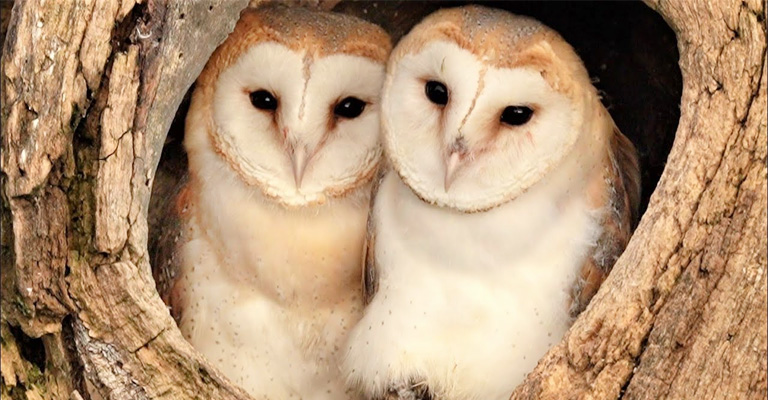
Do Owls Stay Together After Mating?
Owls are typically not known for forming long-term monogamous relationships. While they do engage in mating rituals and may stay together during the breeding season, their partnerships are often temporary and based primarily on the need to reproduce and raise offspring. Once the breeding season concludes, many owl species go their separate ways.
The exception to this general rule is that some owl species, particularly those that inhabit areas with stable and abundant food sources, may engage in more stable, long-term pair bonds.
These pairs may stay together outside of the breeding season, sharing hunting duties and maintaining their territory. However, even in such cases, the bonds are more pragmatic than emotional, driven by the advantages of cooperation in hunting and protecting their territory.
In summary, while owls do form pairs for breeding purposes, most owl species do not stay together long-term after mating. The nature of their post-mating interactions largely depends on the species, habitat, and available resources.
What Are Some Owl Species Which Stay Together After Mating?
Several owl species are known for staying together after mating and forming relatively stable, long-term partnerships.
Here are such owl species:
Barn Owl (Tyto alba)

Barn owls are known for forming long-lasting monogamous pairs. They often mate for life and remain together year-round. This species is characterized by its heart-shaped facial disc and is found on almost every continent.
Spotted Owl (Strix occidentalis)
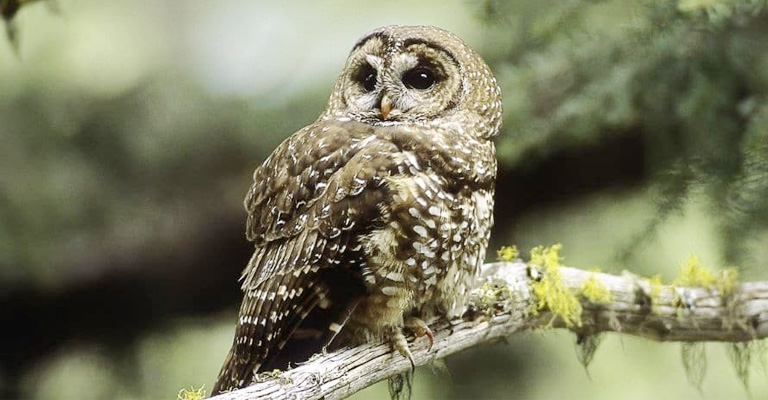
Spotted owls, a group of owl species native to North America, tend to form long-term monogamous bonds. They mate for life and occupy territories year-round, with both partners participating in raising their young.
Barred Owl (Strix varia)

Barred owls, also native to North America, are monogamous and often maintain their partnerships outside of the breeding season. They share responsibilities for hunting and caring for their offspring.
Great Horned Owl (Bubo virginianus)

Great horned owls are known for their diverse diet and adaptability. They often form long-term bonds, with pairs staying together throughout the year and sharing the tasks of hunting and parenting.
Eurasian Eagle-Owl (Bubo bubo)
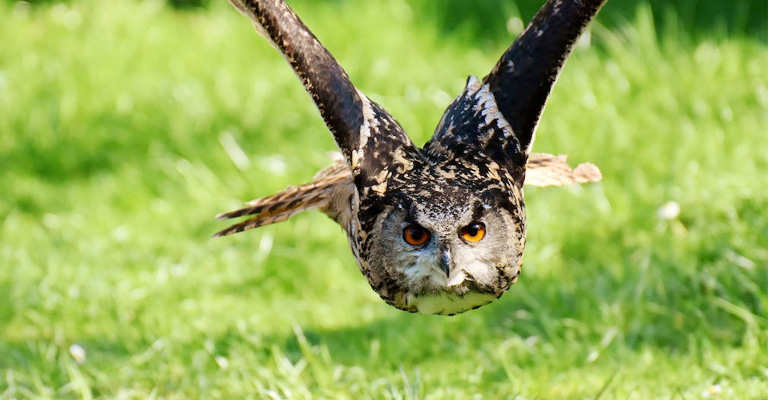
Eurasian eagle owls, found in Europe and Asia, tend to establish long-term monogamous pairs. These large owls maintain their territories year-round and cooperate in raising their young.
Northern Hawk Owl (Surnia ulula)
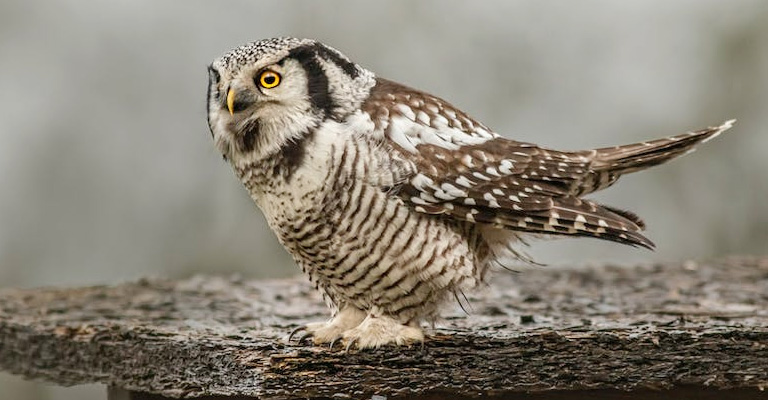
Northern hawk owls, despite their name, are not true owls but are closely related. They often form stable breeding pairs and can be found in the northern regions of North America and Eurasia.
Ural Owl (Strix uralensis)
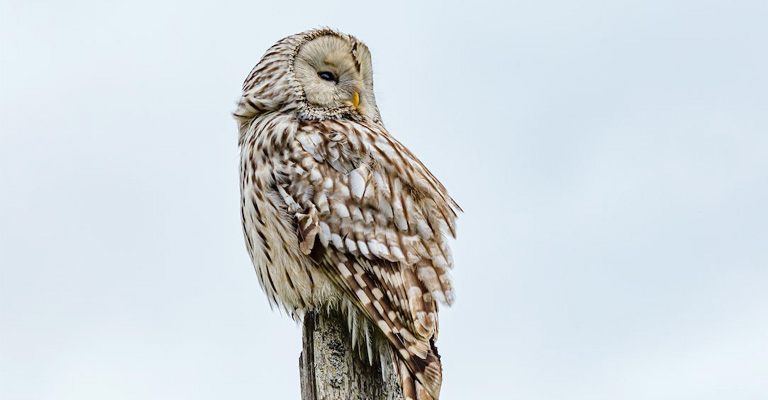
Ural owls are native to Europe and Asia and are known for forming long-lasting pair bonds. These owls stay together throughout the year and cooperate in defending their territories and raising their offspring.
These owl species demonstrate various degrees of long-term bonding and cooperation between mating pairs, reflecting the diversity of behaviours and ecological niches within the owl family.
When Is The Owl’s Mating Season?
Owls have distinct mating seasons that vary by species and are often influenced by environmental factors, prey availability, and geographic location. Here are the different kinds of owl mating seasons:
Winter Mating Season (December to February)
Some owl species, like the Great Horned Owl, begin their courtship and mating during the winter months. These owls have adapted to cold climates and may use the winter season to secure their territories before breeding.
Spring Mating Season (March to May)
Spring is a common mating season for numerous owl species. As the days lengthen and temperatures rise, owls like the Barn Owl, Northern Saw-whet Owl, and Eastern Screech Owl become more active in courtship, nest-building, and raising their young.
Late Spring to Early Summer Mating Season (May to July)
Some owl species, such as the Barred Owl and Spotted Owl, engage in mating during late spring to early summer. These owls are often associated with lush, temperate forests and may time their breeding to coincide with peak food availability.
Autumn Mating Season (September to November)
A few owl species, like the Long-eared Owl and Short-eared Owl, have an autumn mating season. These owls may breed during the fall, potentially taking advantage of seasonal prey populations and milder weather.
Variable or Year-Round Mating Season
Some owl species, such as the Eurasian Eagle-Owl and Snowy Owl, don’t adhere to a strict mating season and may mate throughout the year. These owls are often found in a variety of habitats and have greater flexibility in their breeding schedules.
The timing of owl mating seasons is influenced by a combination of factors, including local climate conditions, prey availability, and the specific ecological niche of each species.
Understanding these variations is essential for effective owl conservation and management efforts.
How Do Owls Attract A Mating Partner?
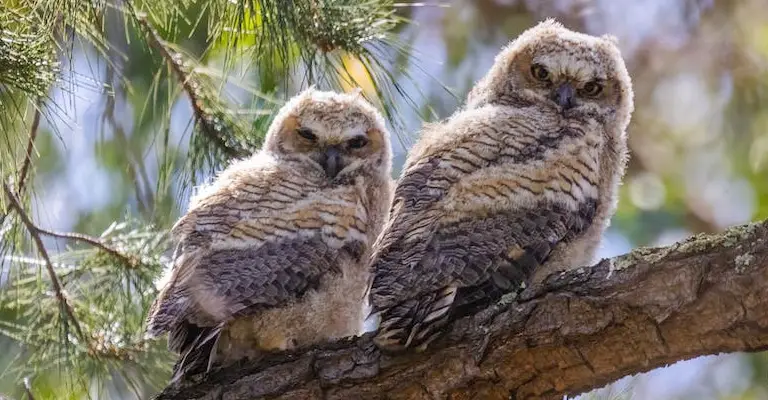
Owls employ various techniques to attract a mating partner, displaying intricate behaviours and vocalizations. Here are the ways owls attract their mates:
Courtship Calls
Owls, especially males, often use distinct courtship calls to attract potential mates. These calls can vary widely between species and may include hoots, hollers, or melodious tunes.
The calls serve as a way for owls to communicate their presence and reproductive readiness to potential partners.
Visual Displays
Owls engage in visual displays during courtship, which involves specific body language and gestures. This can include puffing up their feathers to appear larger, swaying their bodies, or bowing their heads.
Visual displays are a way for owls to showcase their health and vitality to potential mates.
Gift Offerings
Some owl species, like the Barn Owl, engage in gift offerings during courtship. The male owl presents the female with prey items, such as mice or insects, as a demonstration of his hunting prowess.
This behaviour showcases his ability to provide for the female and potential offspring.
Nest Building
Nest building is a shared activity in many owl species and serves as a crucial courtship behaviour. Owls work together to build a suitable nest, demonstrating their ability to collaborate and create a safe environment for raising their young.
The construction process strengthens their bond and prepares them for parenthood.
Dancing and Preening
Owls engage in dancing and preening rituals during courtship. They may perform synchronized movements or engage in mutual preening, where they groom each other’s feathers.
These behaviours foster intimacy and strengthen the emotional connection between potential mates.
Territorial Displays
Owls establish and defend territories, and these territories play a vital role in courtship. Males may defend their territory vigorously, displaying their ability to protect a suitable nesting site and abundant food sources.
Females are attracted to males with well-maintained territories, ensuring a safe environment for raising their offspring.
Feather Displays and Ornaments
Some owl species have unique feather displays or ornaments that they use during courtship. For example, the Long-tufted Screech Owl has elongated tufts of feathers on its head, which it can raise or lower as a form of communication.
These feather displays add visual appeal and can be attractive to potential mates.
These courtship behaviours in owls are essential for mate selection and establishing successful breeding pairs. Through a combination of vocalizations, displays, and gestures, owls communicate their suitability as partners and contribute to the continuation of their species.
FAQs
Do all owl species stay together after mating?
No, not all owl species stay together after mating. The post-mating behaviours of owls vary significantly between species. While some owls form long-term, monogamous pairs that stay together year-round, others have more transient relationships and come together solely for breeding purposes.
Why do some owl species stay together after mating?
Some owl species stay together after mating because it offers advantages such as shared responsibilities in hunting, territory defence, and raising offspring.
Monogamous pairs often ensure a stable environment for the successful rearing of their young.
Which owl species are known for staying together after mating?
Owl species known for forming long-lasting, monogamous pairs include the Barn Owl, Great Horned Owl, and Spotted Owl, among others. These owls often stay together year-round and share various aspects of their lives.
What factors influence whether owls stay together after mating?
Factors such as environmental conditions, prey availability, and geographic location play a significant role in whether owls stay together after mating. Owls adapt their post-mating behaviours to their specific ecological niches and resource availability.
Do owls that stay together after mating also share parenting duties?
Yes, owls that stay together after mating typically share parenting duties, including nest-building, incubating eggs, and feeding and protecting their young. This cooperative behaviour contributes to the successful raising of their offspring.
Conclusion
The question of whether owls stay together after mating has a multifaceted answer that depends on various factors.
While some owl species form long-lasting monogamous pairs and maintain their partnerships year-round, others are more transient and come together solely for breeding purposes.
Understanding the intricacies of owl relationships highlights the diversity within this avian group and underscores the importance of adapting to the specific ecological niches and environmental conditions they face.
The intricate interplay of nature’s forces is a testament to the adaptability and resilience of these remarkable birds, offering a deeper appreciation for the world of owls and their complex social behaviours.